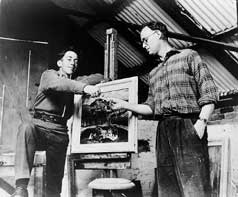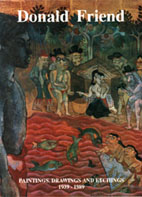One of the best paintings ever drawn of Galle is a six-meter long mural of the ancient fort city painted by, Australian artist Donald Friend. Barry Pearce, the Senior Curator of Australian Art at the Art Gallery of New South Wales, regards this mural, “City of Galle”, as Donald Friend’s finest work. The painting was commissioned by the shipping firm McKinnon & Mackenzie & Co. in April 1961. The firm which represented the P & O shipping line was based in the main port city of Galle. The John Keells Group, through its acquisition of that company is the present owners of this magnificent piece.
Donald Friend 1915-89
Donald Friend, who is often referred to as “the great wine of Australian Art”, was born in Sydney on 6th February 1915. He studied with Dattilo Rubbo at the Royal Art Society of New South Wales in 1934 and under Bernard Meninsky and Mark Gertler at the Westminster School of Art, London. He spent much of his life outside Australia including periods in Ceylon (1957-61) and Bali (1966-80). He had power and sensitivity as a draughtsman, with an ability to delineate forms in an almost calligraphic line, mixed with feeling for colour and design. He died in Sydney on 16 August 1989, aged 74.
Barry Pearce, friend and Senior Curator at the National Gallery in NSW, writes about his sojourn in Ceylon;
In 1957 he sailed for Colombo with Russell Drysdale’s son Tim, but just before he did, produced The Fortune Teller in Hill End in 1956-without doubt one of his best paintings. Rich in colour and shape, it recalls one of the artist’s earliest loves of modern French painting: Paul Gauguin. Margaret Olley has pointed out that the decorative elements were inspired by a reproduction of Indian elephant rugs. Then in Ceylon [Sri Lanka] he produced a substantial body of work, from the trompe l’oeil doors, An Exotic Garden Viewed at Different Levels 1957, whilst staying on the estate of Bevis Bawa, whose brother the architect Geoffrey Bawa later installed the doors in his house, and there they stayed until purchased by the Art Gallery of New South Wales in 1988; to the large mural City of Galle 1961 commissioned by a prominent shipping company. This walled Portuguese fort was captured by the Dutch in the seventeenth century and became the Ceylonese center of the Dutch East India Company.
Interrupted Genius: Donald Friend as Artist – by Barry Pearce
 |
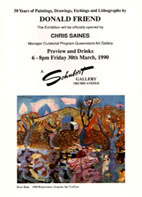 |
||
|
Donald Friend (Wikipedia) |
With Russell Drysdale |
Invite from the 1990 Retrospective |
|
Friend in Ceylon:
Mackinnon Mackenzie & Co. of Ceylon, a premier shipping agency in Sri Lanka (then Ceylon), commissioned Donald Friend , when he lived and painted in Sri Lanka for a period of 4 years. Donald Friend at this time was working closely with Geoffrey Bawa, a renowned architect on many projects of the John Keells Group. It was thru Geoffrey that the company commissioned the artwork to adorn its Colombo offices, and Geoffrey has . The mural depicts the artist’s impression of the ancient walled city of Galle as at the turn of the century, the place where the company’s shipping business had its beginning. Galle was the shipping hub at that time, and the company Mackinnon & Mackenzie traces it’s beginnings to this walled city, where its century long association with the shipping principals Peninsular & Oriental line (P&O) had its beginnings.
In his now famous diary, Friend made the following note on the 4th of April 1961,
“I’ve been working intensely and at a great pace nearly every day from early morning until the light fails, on the bid 12′ by 4′ panel of the mural. It comes along well. An elaborate and detailed subject – a sort of architectural fantasy of the walled fort of Galle with the harbor full of sailing ships, the sky in gold leaf”
The painting is a faithful representation of the important land marks in Galle as well as within the walled city. The clock tower, light house and the bastions of the fort as well as the New Oriental Hotel, the Dutch Warehouse (Maritime Museum) as well as many other buildings are clearly identifiable. The house depicted on the point on the left, which is now the Closenberg Hotel, was once owned by the Agent of P&O, colonial artist and pioneering photographer, Colonel Bailey. Captain Francis Bailey arrived as an agent for the Peninsular & Oriental line, which has started a steamer service between Calcutta and the Suez. He purchased an old disused small fort and built the house of his dreams (see Closenburg the Cliff Citadel). The Baileys lived in the house till 1871, and sold it to the P&O Steamship Company for use as the official resident of the agent.
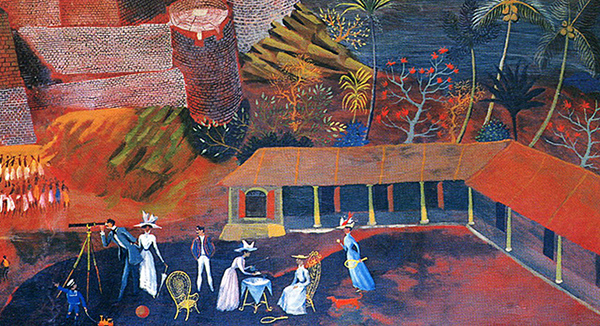 |
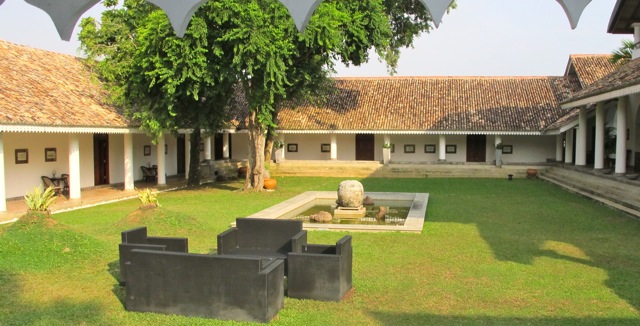 |
The person and the house in the right foreground, with the telescope, is the then Manager of P&O. The house is a manor house in the city of Galle that was built over 250 years ago by Don Johannes Amarasiri, a wealthy Sri Lankan aristocrat. This home was the official residence of the British Admiral of the Peninsular and Orient Steam Navigation Company (P&O Line). The property is now a well-known boutique hotel called Tamarind Hill Hotel (www.tamarindhill.lk). The painting depicts the manager looking out for the company ships arriving in to the harbor. Many mistakenly attribute this property to be the Closenberg, and the person shown to be Colonel Bailey. The property associated with Colonel Bailey, the Agent of P&O, is physically set on the left promontory, south of the Galle bay and is depicted in the extreme top-left of the mural. Considering the geographic accuracy with which Donald Friend has drawn the mural, it is highly unlikely that he depicted Closenburg to be inland and to the north-east of the bay. The telescope depicted is still in the possession of the company, and was used even after the shipping activities shifted to the port of Colombo. This could be seen in the room of the director, in their current Colombo office (see Mackinnon Mackenzie & Company and the P&O Line). The ships depicted in the harbor are a mixture of traditional Arab trading sailing boats and some British India Steamship Navigation Co., trading ships that P&O and Mackinnon Mackenzie used at that time.
The mural consists of a massive center panel 12 feet by 4 feet, and two sections on the sides housing 12 smaller panels each, all mounted on a sturdy wooden sub-frame. The painting is in oil, gold leaf on hardboard and incorporated a technique of laying thin layers of gold foil on the painting, which Donald Friend introduced to Ceylon for the first time. Ismeth Raheem who was an apprentice Architect with Geoffrey Bawa at that time remembers Donald Friend working on gold leaf. An artist himself, later on he and fellow artist Laki Senanayake was to learn the technique from Friend and apply it to several artwork, one commissioned by the chairman of John Keells, Ken Balendra. “The gold which comes in a bar the size of a bar of chocolate, is hammered down using a large mallet, so that it becomes paper thin. Gold which is a soft malleable metal can be used like this for gilding and artwork. The metal is flattened so thin that even you breadth can make a dent in it. So a mask is worn when working with gold leaf. When the leaf is ready, its cut into shape and a type of wood varnish layer is applied on the substrate. When this becomes sticky, the gold leaf is positioned and laid.” Interestingly the painting is dotted with a series of bright orange colored dots. As explained by Alan Lloyd, Head of Conservation, Art Gallery of NSW, this is purposely put in to to brighten up the painting and bring the eye to the different parts of the painting.
The murals are painted in a Masonite base. This is a wallboard made in Australia and was used for wall panels and ceilings in place of plasterboard. In the 1950s- 60s many contemporary artists used it because it was cheap, readily available and came in sheets 48″ wide and up to 144″ long. Masonite expands and contracts when wet and with changes in humidity. The sub-frame acts as a restraint and consequently the paintings develop concave or convex warps in the center and also get twisted if the frame is not strong enough to constrain it.
Whilst in Ceylon, Donald Friend also painted a smaller mural of similar style for John Keells Limited, a long established tea broking firm which was the nucleus company of the massive John keells Group. Titled “View of Colombo”, this mural has been painted with the accent on the tea trade.
View of Colombo 1961
The Artist became famous in his lifetime and died in the year 1989 unable to stretch his extraordinary life long enough to see a major retrospective of his work arranged by the Art Gallery in New South Wales, Australia, in the early part of 1990. John Keells Group, the present owners of this magnificent piece, loaned it to the Museum of New South Wales for the exhibition. When informed of this decision prior to his death, he has been delighted that one of his major triumphs was being loaned as a centerpiece of the Retrospective. Both paintings were restored by the Art Museum of NSW during its stay in Australia. The ‘City of Galle’ was treated for insect damage and copies were made to be displayed in public areas, while the originals remained in the safety of the executive floor. The person who came to ship the paintings to Australia (as well as restore them while in Australia) was Allan Lloyd, head of Conservation. Years later, Allan was to revisit the paintings under totally different circumstances.
Anxious Moments:
14th February 2004 was like any other Saturday at the corporate office in Glennie Street. It was Valentines Day and the premises looked calm and quite. However things were to change drastically by nightfall. Around 10.30 in the evening, a suspected electrical short circuit started off a fire on the 3rd floor. By the time this was spotted, flames were leaping thru burst windows. The Colombo Fire Brigade arrived at the scene to fight the fire which by now was leaping upwards thru the burnt roof. The Air Force fire brigade too joined in with their high lift equipment and managed to douse the fire. By this time half the 3rd floor was in cinders, the rest lay covered in 6 inches of water. All power shut down, the building lay in complete darkness.
In the morning anxious executives climbed the stairs to access the damage and start the recovery process. Thankfully they find both murals untouched by the fire. The fire which damaged more than half of the third floor offices was stopped just on time; at a 9 inch wall separating the board room, from rest of the offices. On the undamaged side of this wall lay the mural ‘View of Colombo’. The mural suffered damage from water, chemicals and grime but a heavy wooden mount which kept it at least 4 – 6 inches away from the intense heat of the wall, saved the painting and the intricate gold leaf work.
Assessing the damage, the author, then a manager in the IT division of the company, reaches out to his friend and art aficionado Dr. Srilal Fernando in Australia. Under his advice the author contacted the Art Gallery of New South Wales thru their website, informing them of the damage and seeking help and advice to assess the damage. It was Allan Lloyd who was to respond to the appeal. The author also shared pictures of the damage with Allan for a preliminary assessment. Alan was no stranger to the mural, having come down to Colombo to dismantle, pack and ship the Donald Friend murals to Australia for the Donald Friend Retrospective in 1990.
In the meantime Ajith Gunawardene, a Board Director of John Keells reaches out to Mike Anthonisz, a well-known artist and accountant in one of the subsidiaries, as well as to Ismeth Raheem, well known artist and an eminent architect, to contact a reliable restorer to help restore the ‘City of Colombo’ painting of Donald Friend. In turn Ismeth reaches out to Allan, the best person to restore the mural, as he had intimate knowledge of the mural. However the immediate availability of Allan was in question.
Ismeth has met Allan when he arrived in 1989/90 and jointly worked at processing the murals for shipping. This involved dismantling the individual panels from the supporting frame, and packaging it carefully for shipment. He also takes Lloyd to visit Bevis’s and Geoffrey Bawa’s garden estates Brief and Lunuganga. “We spent almost a whole day with copies of Donald Friends diary entries [Ceylon 1957-61] locating the several art works, paintings and landscape statuary he had undertaken for Bevis and Geoffrety Bawa. We became firm friends and he visited my home and at lunch presented me with a painting which is treasured by me.”
Under Allan’s guidance the painting is removed to a safer location and the larger City of Galle mural fixed in the foyer a few meters away, is wrapped in heavy polythene and totally enclosed to protect it from further damage during the clean-up and re-build. In the meantime the directors of the company reach out to assessors on the cost of restoration, thru the insurance agents. The reply was grim, the company had to incur millions of rupees to ship the artwork to a specialist restorer in Singapore. The prohibitive costs included a hefty insurance on shipping and storage while the painting underwent a complex restoration in Singapore.
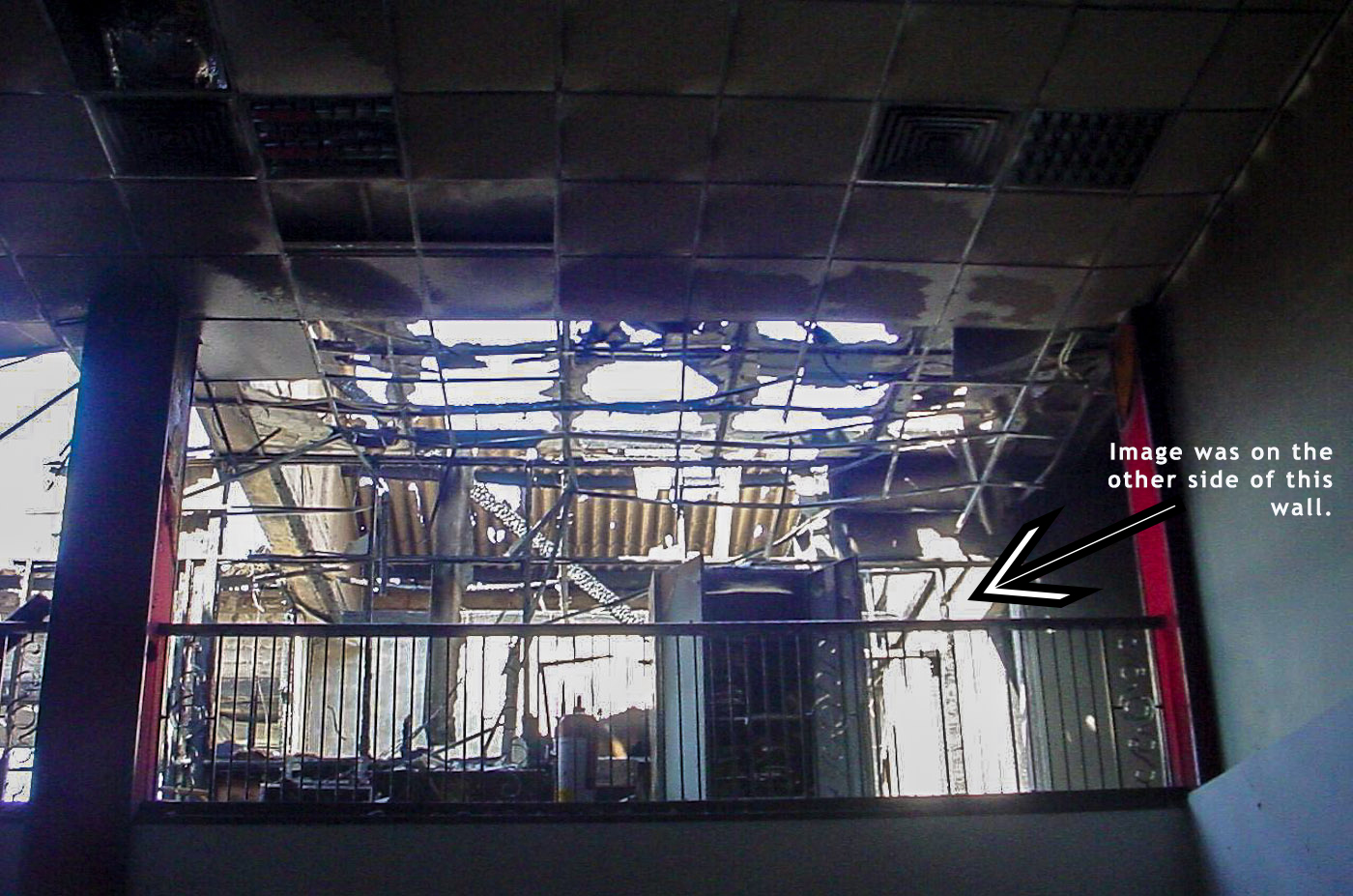
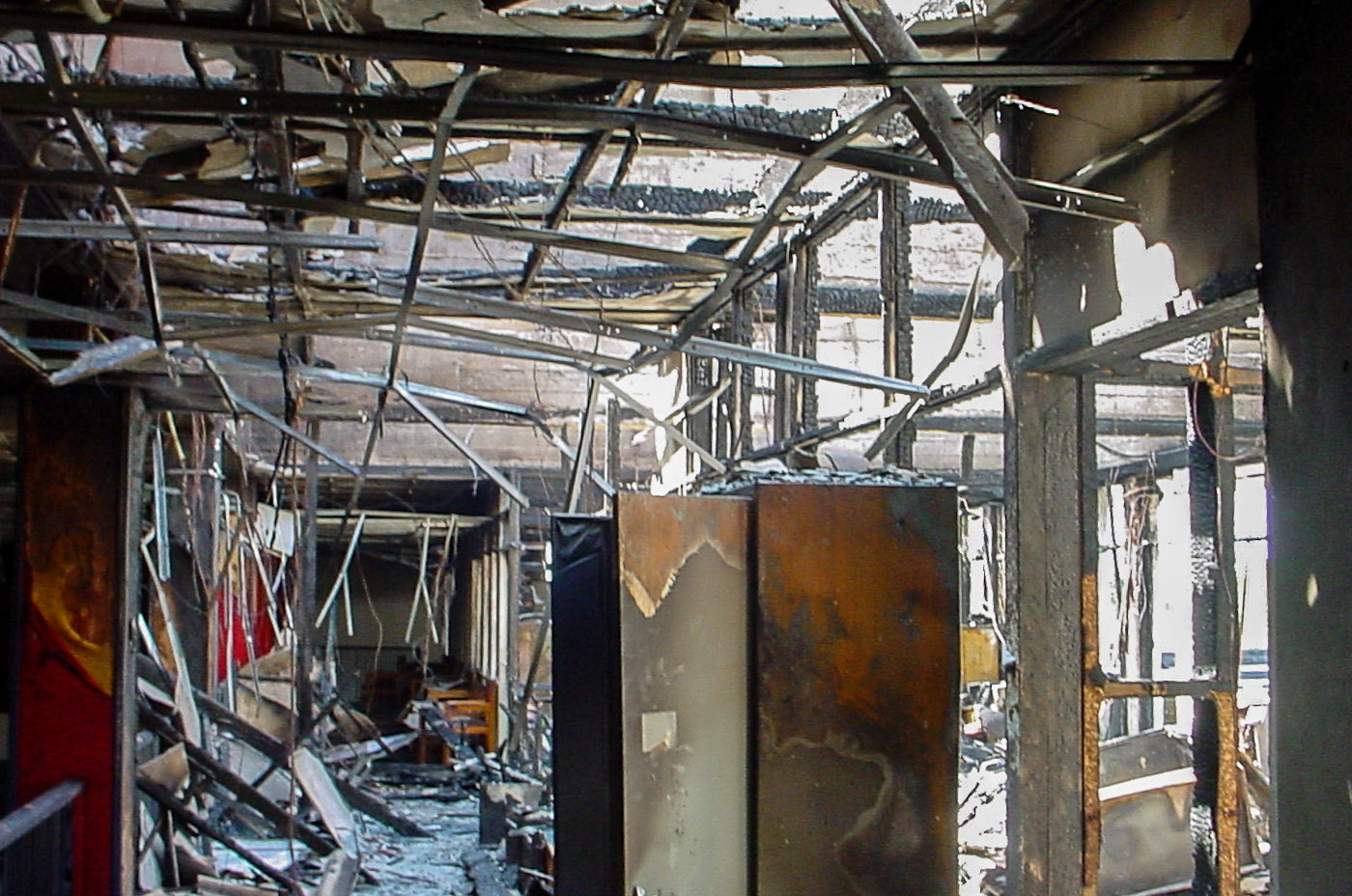
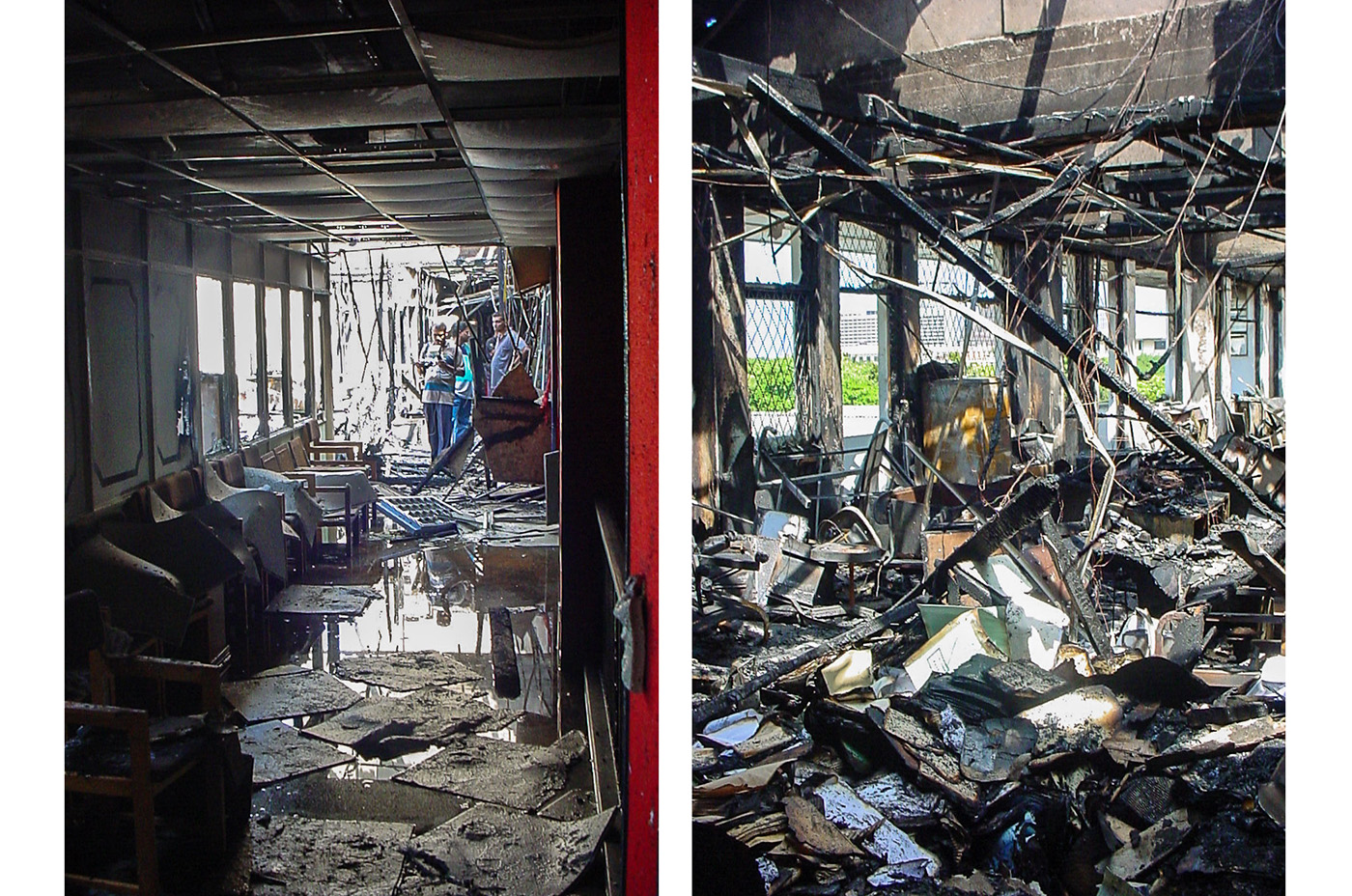


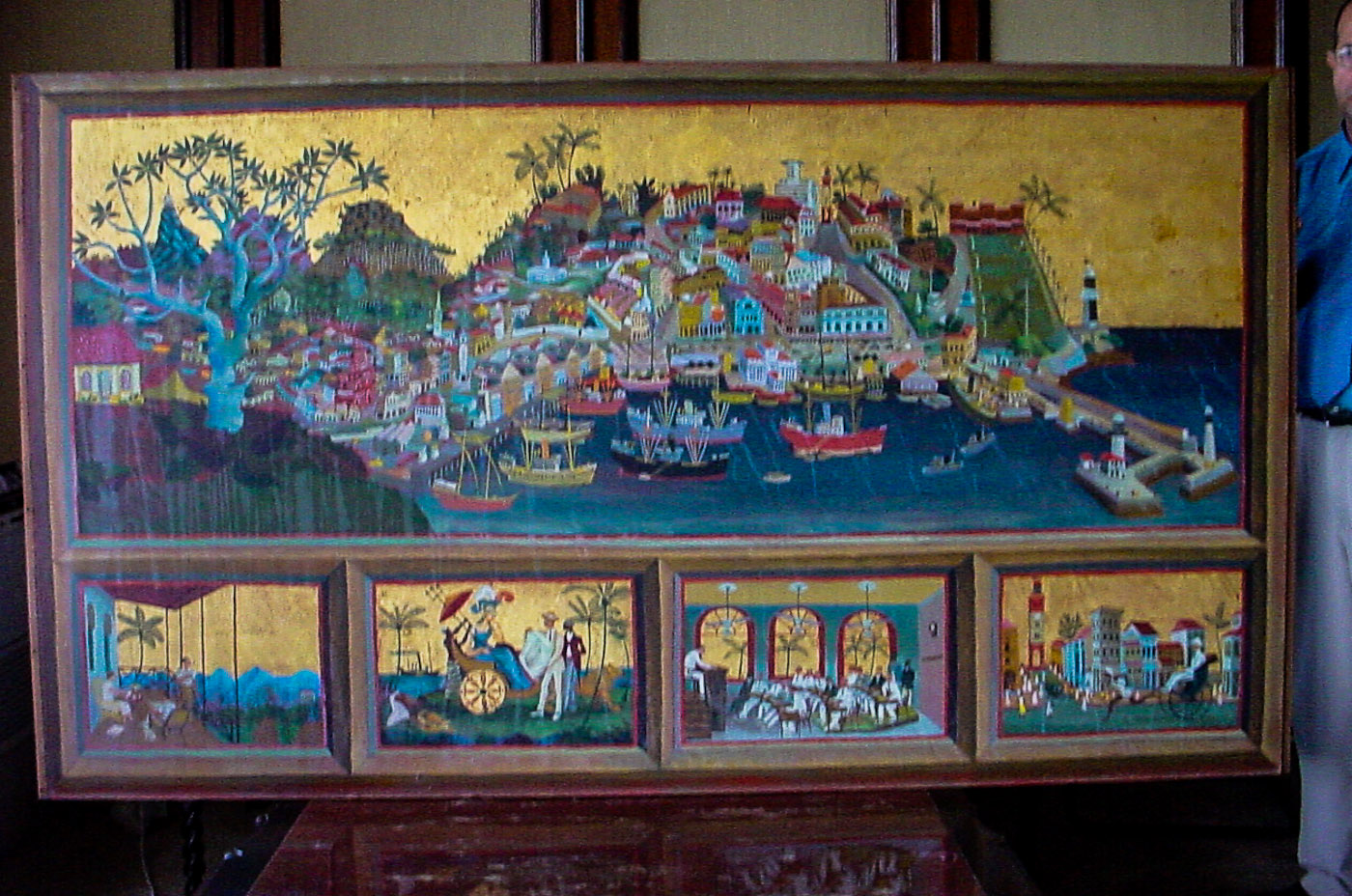
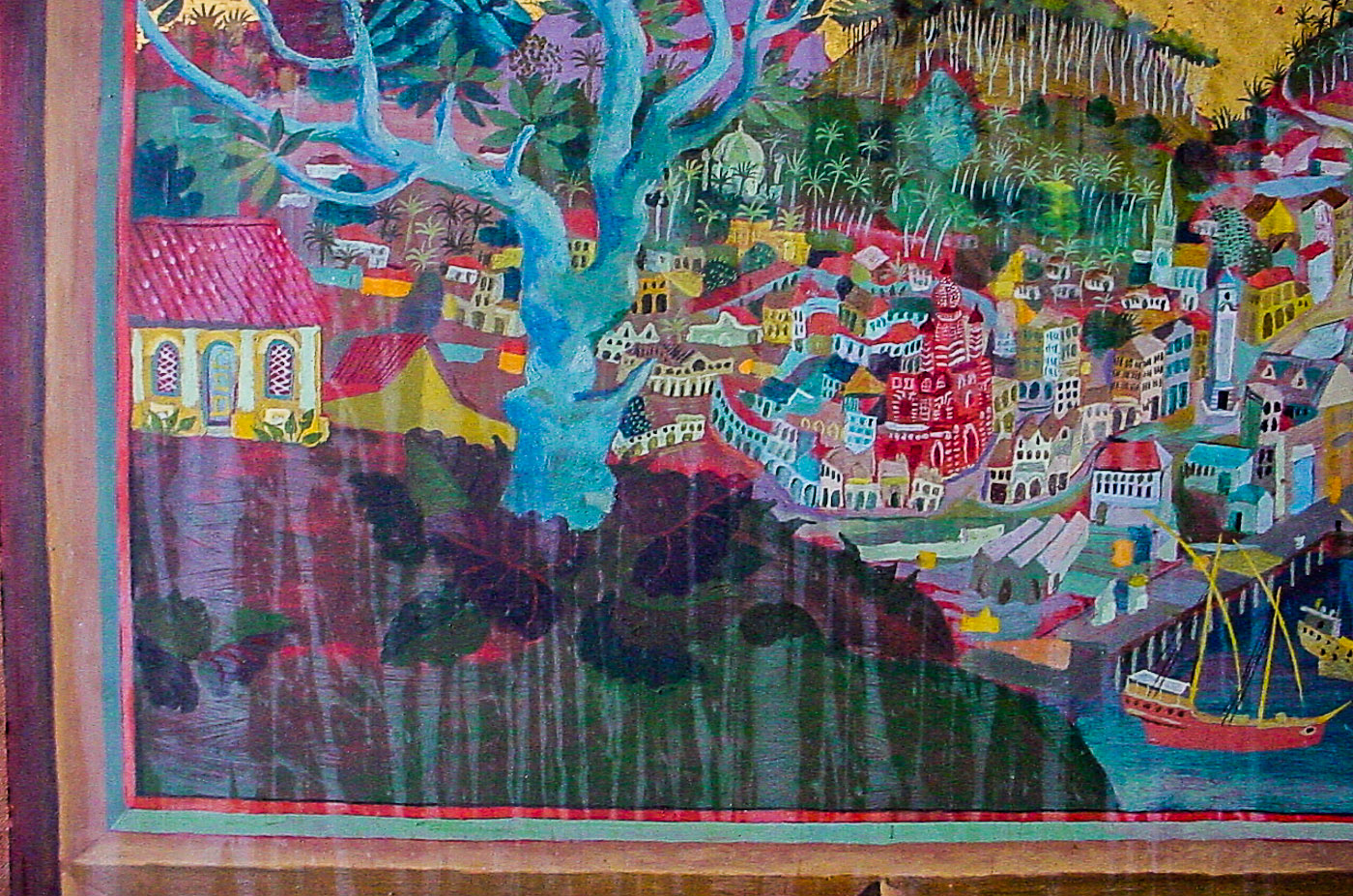
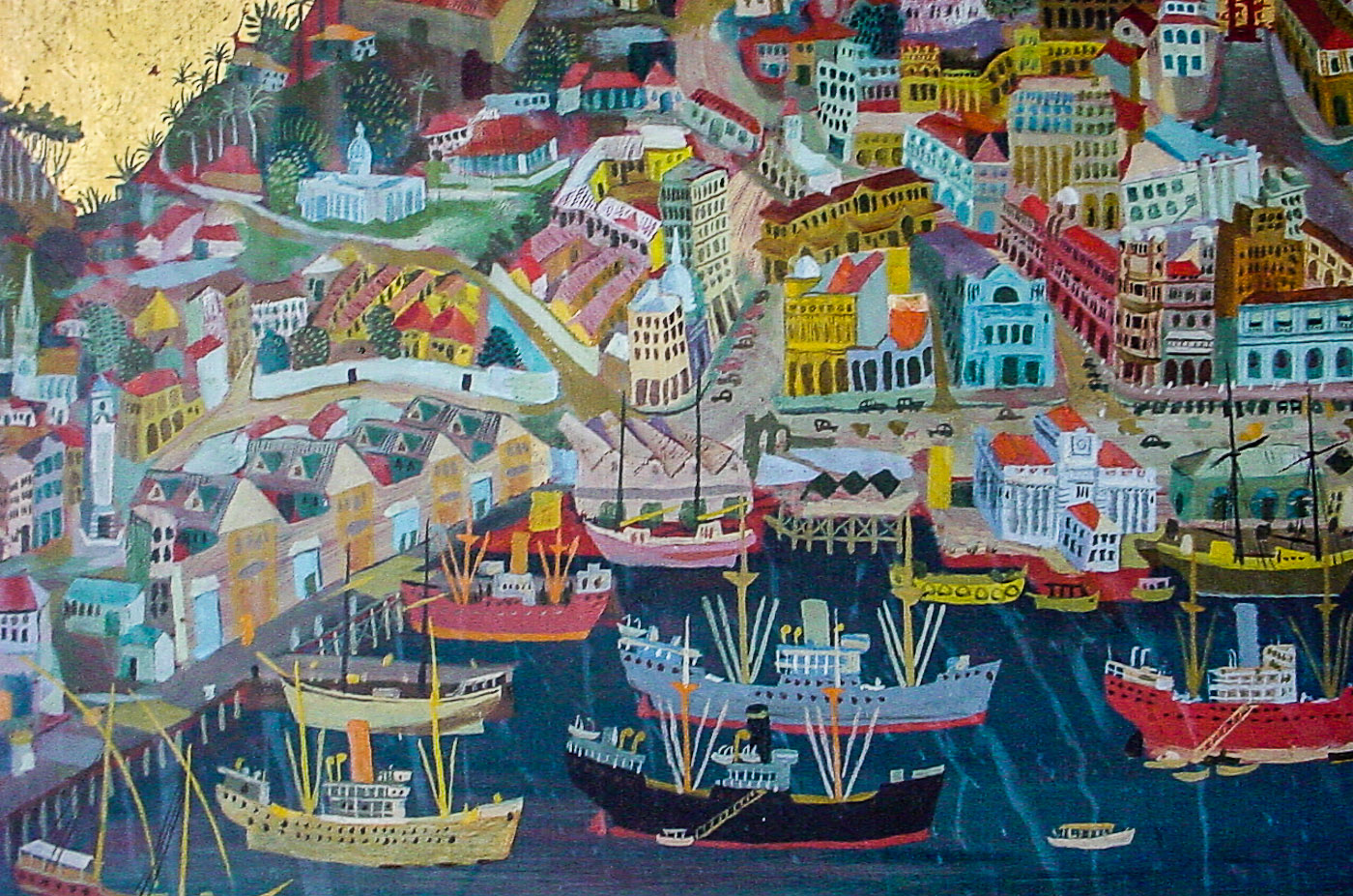
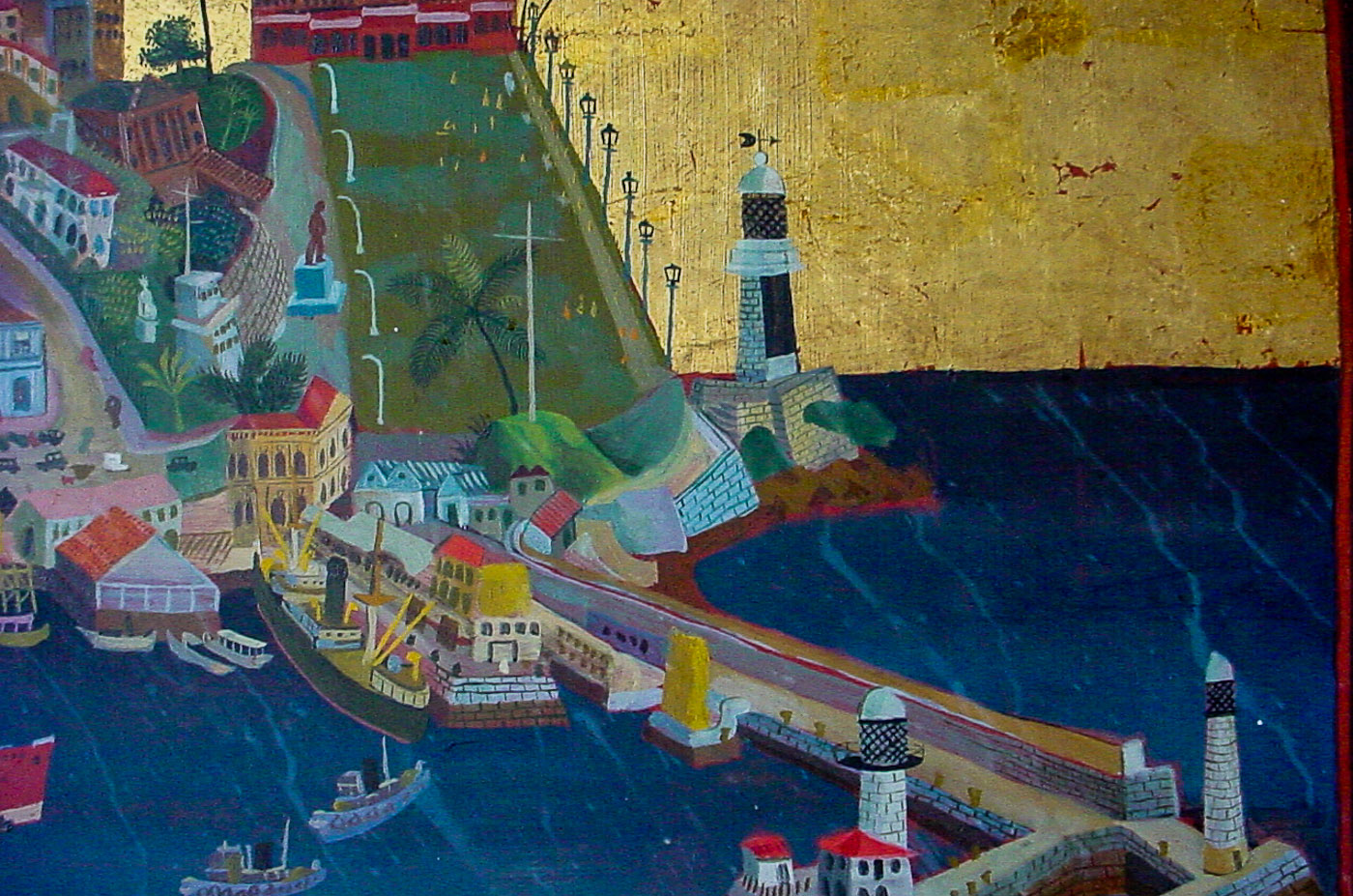
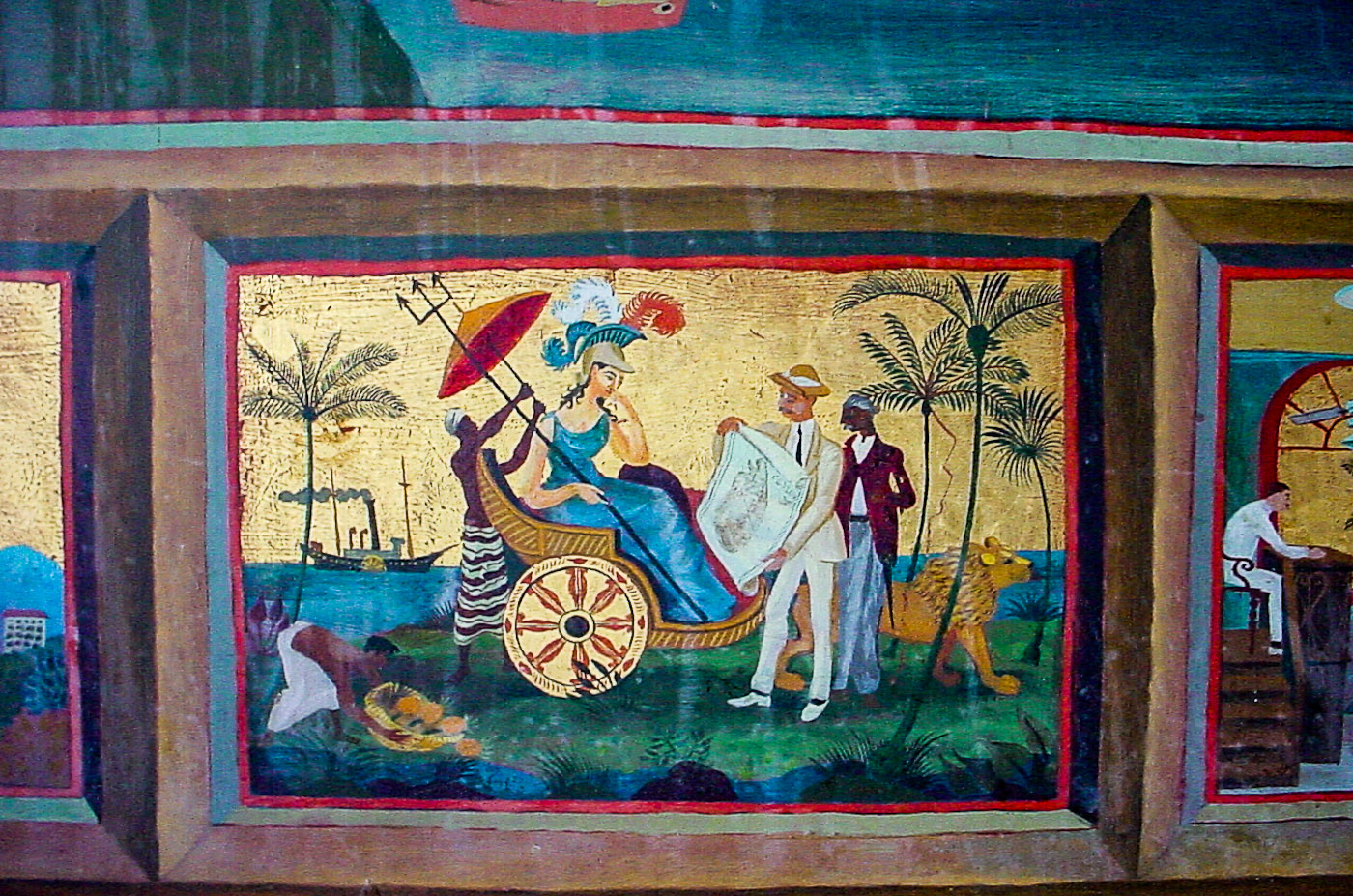
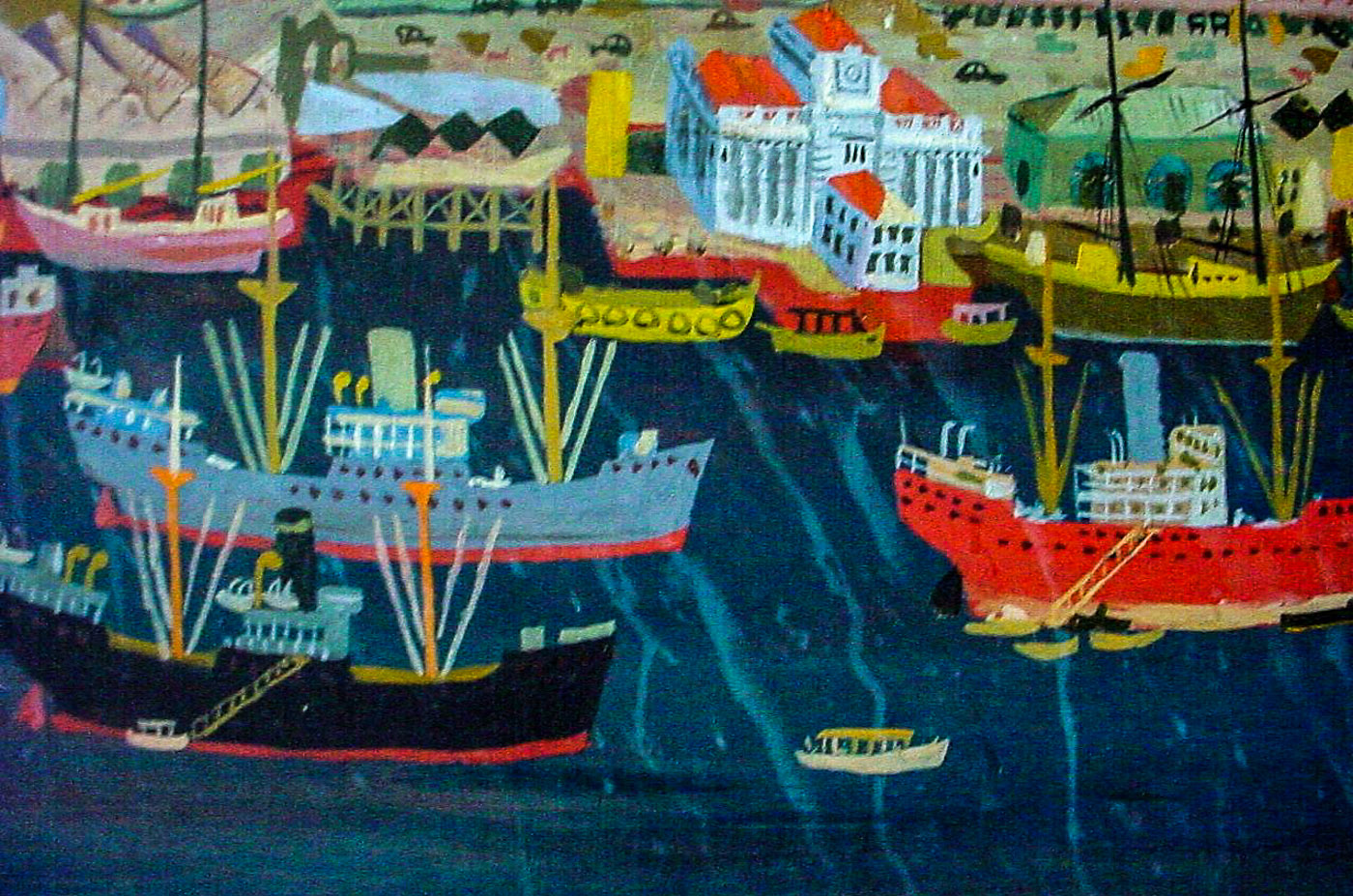

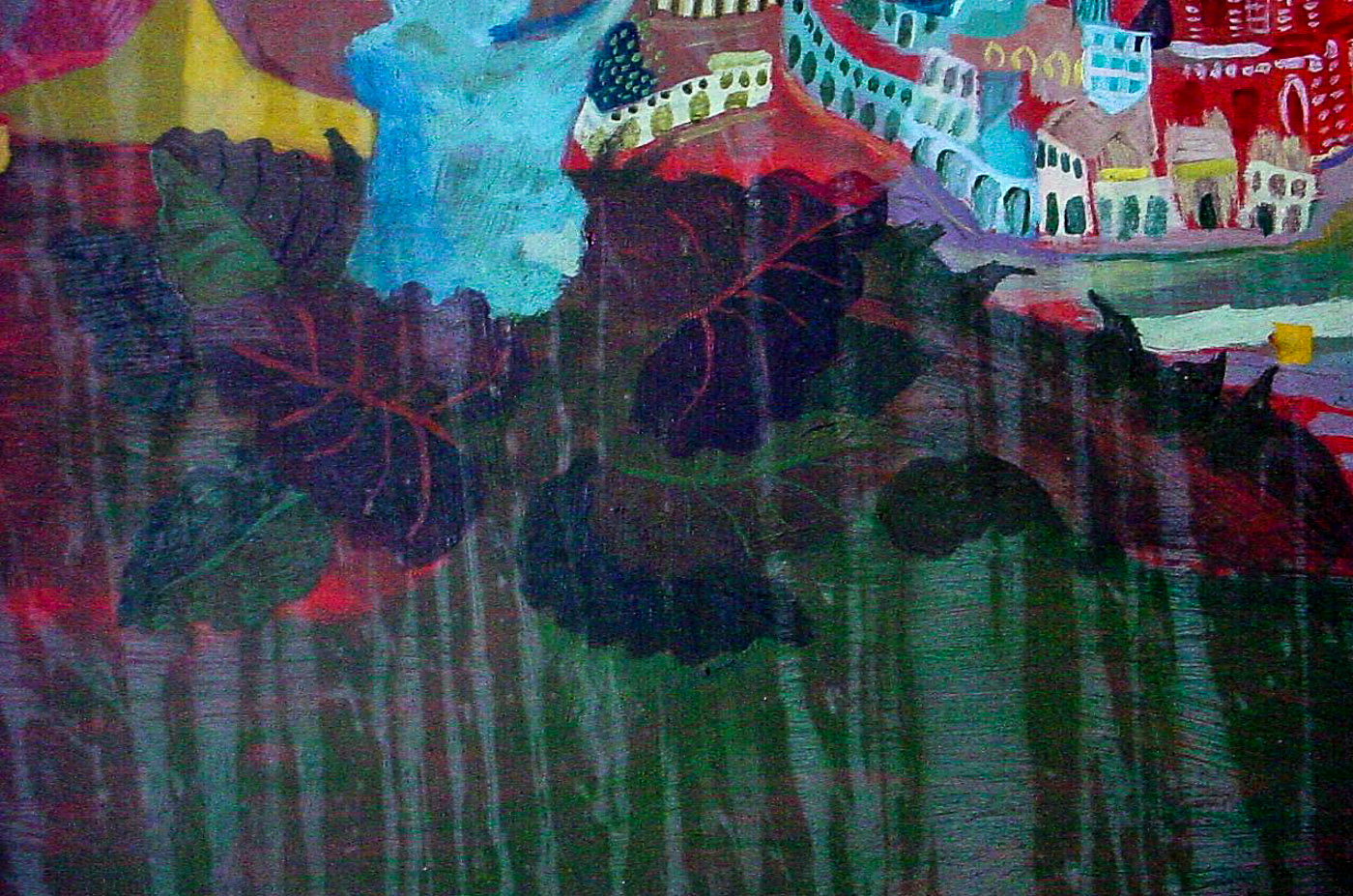
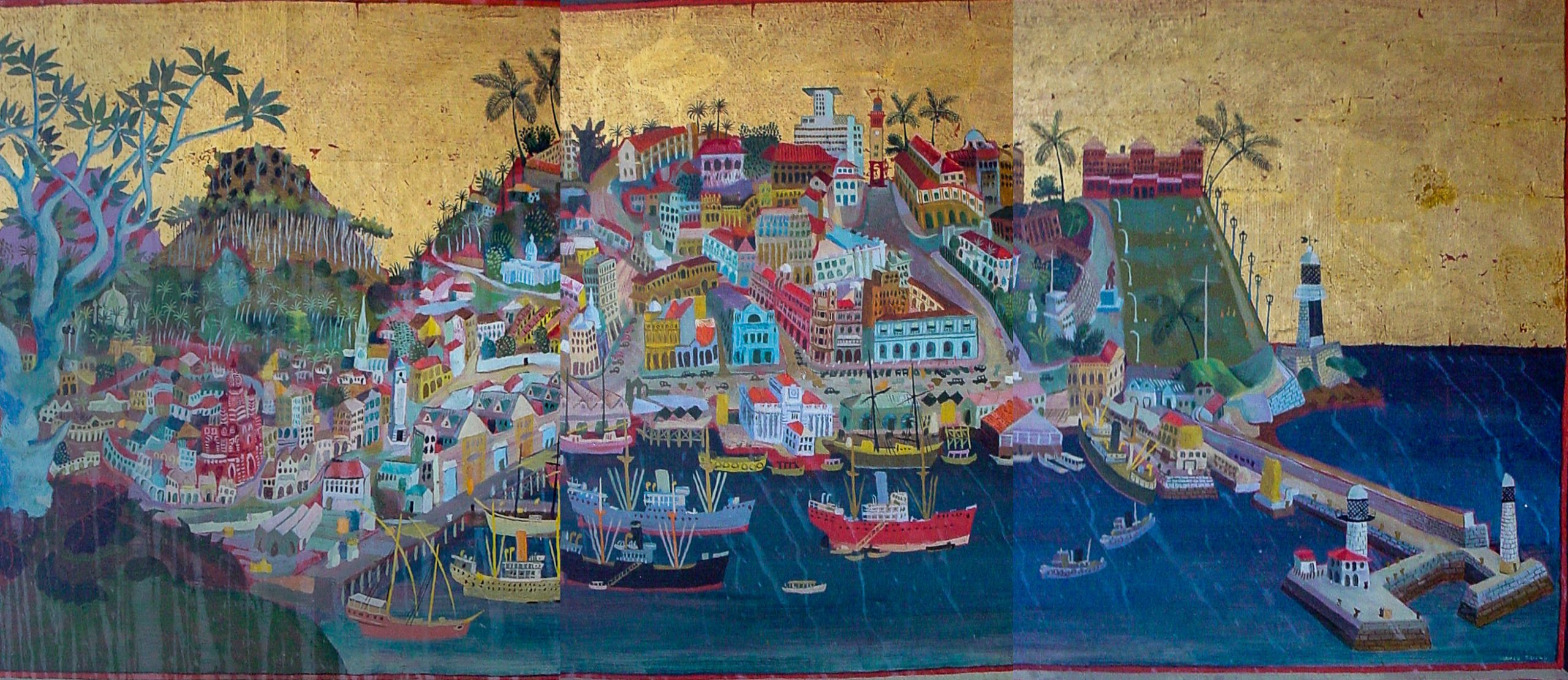
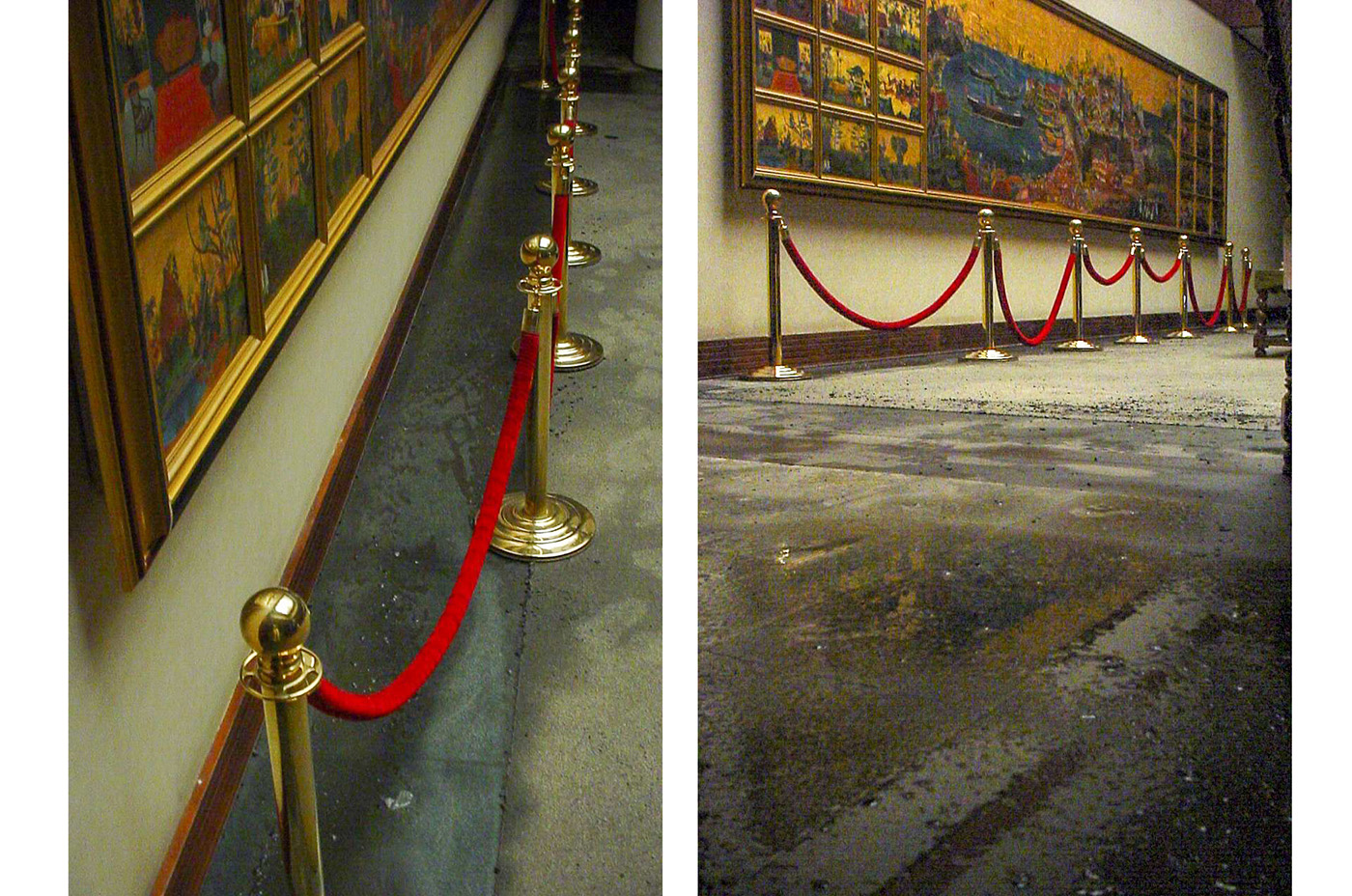
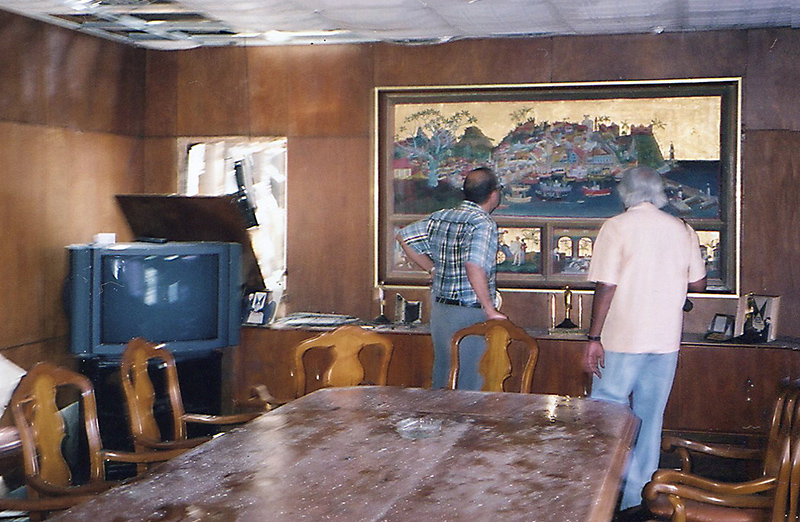
Spit and Polish:
With this grim proposition in mind, the team reached out to Alan again, to seek the possibility of restoring the mural. The author shared some of the close-up photographs taken by him (some of which is displayed above), with Alan for evaluation. Alan was a Fine Art Conservator, and learned the critical task of art conservation at the Art Gallery of NSW, where he worked for 45 years. He was the head of the conservation department for 31 years of his tenure. Alan was also very familiar with the art of his fellow countryman, Donald Friend. After much persuasion Alan agreed to come down to Sri Lanka during his holidays. After letting the painting dry out during this period, Allan made a personal visit to asses the possibility of restoring the painting in situ or to make arrangements to ship it to Australia for further treatment. After the initial ground assessment, Allan decides to start the restoration process in situ and started the painstaking process of cleaning the picture, panel by panel. Years of board room dust has combined with the smoke particles, fire dousing foam and algae rich polluted water pumped from the adjoining Beira Lake to leave streaks of light colored patches.
Alan requests for a quite place by a window with enough light to work on the mural. The maintenance team of the company positions the mural so that Alan can work comfortably. A very soft brush is used by Allan first to carefully remove any loose dirt and soot. To remove the embedded surface soot and patches, Alan comes with an ingenious plan, and his next request dumbfounds the executives. He demands a large quantity of cotton swatches. The executives quickly scour the neighborhood stores and supply him with a load of plastic bottles containing cotton wool balls. They were bottles of baby wipes procured from a mum & baby store nearby. He uses these cotton swatches and ear buds with the best ingredient to remove this type of dirt; human spit!! The saliva helps to clean the mural without reacting with the paints used originally by Donald Friend. Normally destined to wipe the bottom of a baby, these baby wipes, together with Alans own saliva does the trick, and cleans the mural to perfection. After a week of tedious spitting, Alan presents a beautifully restored mural back to the company. Restored with loving care, and at a miniscule of what it would have costed at an international restoration company, Alan’s ‘spit & polish’ treated painting is installed back in its original place in the refurbished offices.
Today the two murals take pride of place in the executive floor of the John Keells Group in Colombo. Copies of the paintings done while it was in Australia adorned the public entrances to the Head Office at Glennie Street (‘City of Colombo’) and the Shipping firm of Mackinnon Mackenzie, adjoining the Colombo port (‘City of Galle’), whilst the originals graze the executive floor. In 2016, the company completely demolished the executive office complex down Glennie Street, to make way for the mega ‘Waterfront’ development the company was promoting. With this the executive offices shifted to a new office adjoining the Cinnamon Lakeside hotel, where the paintings are housed today. Once completed the ‘Waterfront’ complex may one day host these two magnificent paintings.
 |
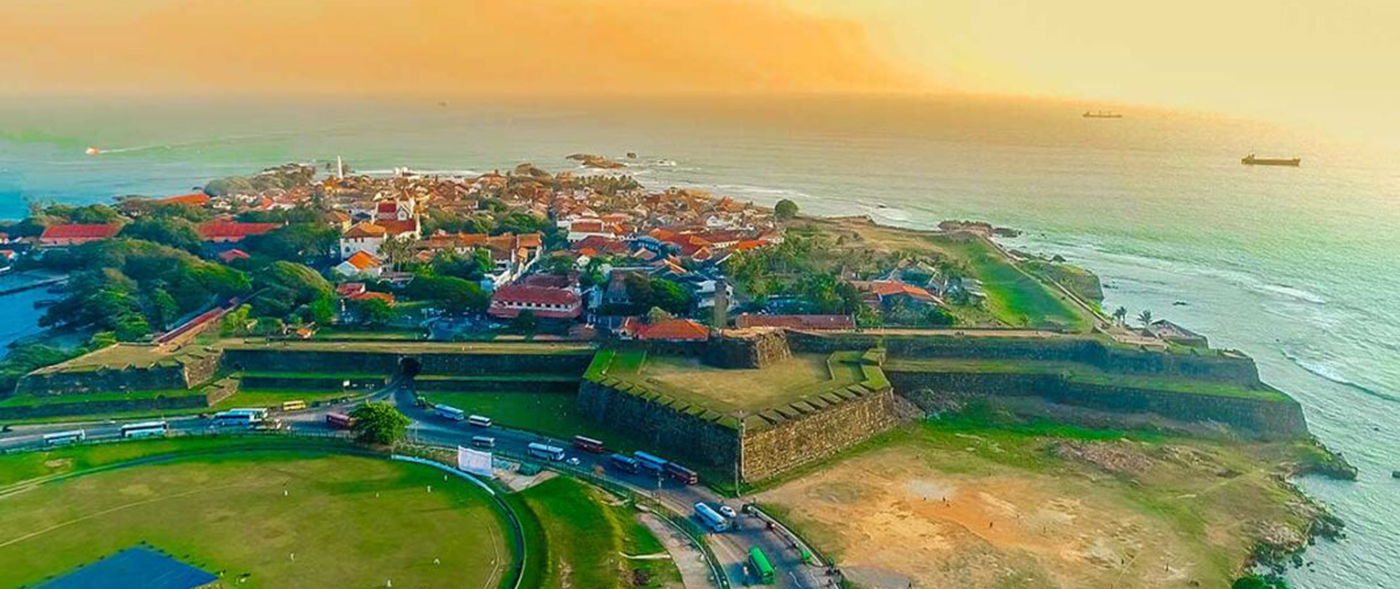 |
| A current day aerial photograph in contrast with Donald Friend’s depiction of Galle. |
Fall of a Friend:
Donald Friend was lauded by his admirers as a “legendary figure”, especially in the Australian art world. Many Art Galleries, celebrated his work by hosting his paintings. Many art aficionados too collected his work, picking them up at exorbitant amounts. But all this was to change with the publication of his diaries, an event which led to him being described as Australia’s most celebrated paedophile.
With his death in 1989, aged 74, the National Library of Australia published his diaries as per his wish. Friend’s diaries were in four volumes and chronicled his life and times. These diaries unfortunately also described his sexual activities with boys and young men, mainly in Sri Lanka and Bali, where he spent a considerable period of time.
The negative fallout from this led to considerable debate on whether it is appropriate to collect and display Donald Friend’s artworks. Many galleries quietly stopped exhibiting his work but still retain them. In the public domain, the demand and hence the prices commanded for his work has come down considerably.
While not in any way condoning Friend’s conduct, the art world still celebrates his work, his artistic reputation unsullied by the now serious sex crimes. The magnificence of his work cannot be discounted, by his actions of a bygone era. Anybody who has seen the grandeur and scale of his magnum opus “The City of Galle” will vouch for that.
Reference:
- Website of the Art Gallery of NSW.
- The Art of Donald Friend in Ceylon – published by the Australian High Commission, 2004
- Personal photo collection of author.
- Correspondence with Alan Lloyd.
- Interviews and correspondence with Ismeth Raheem.
- Daily News 8th January 2016 – http://www.dailynews.lk/2016/01/08/features/tamarind-hill-partners-fairway-galle-literary-festival-2016?qt-popular_articles=1&page=18
- Website of Tamarind Hotel, Galle (https://www.asialeisure.lk/blog/insights/2058/)

